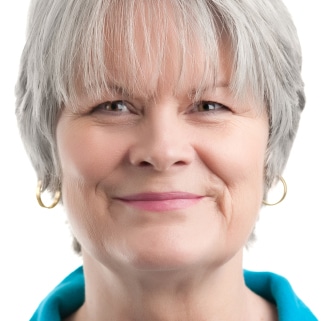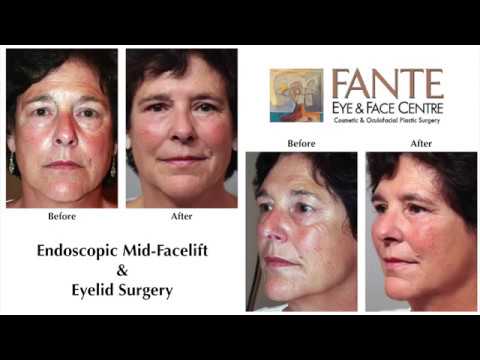Endoscopic Mid-facelift
What is a Mid-facelift (Cheek Lift)?
Also known as a cheek lift, this procedure lifts sagging cheeks, smoothing out those furrows that run from the nose to the corners of the mouth, and lifting up the corners of the mouth. It helps improve early jowling, and also helps reverse and camouflage aging changes below the eyes. For many of us, aging causes the shape of the face to become more oval. The mid-facelift restores a more triangular shape with the youthful appearance of higher cheekbones. Since the improvement comes without visible incisions, this minimally invasive mid face lift is very popular among both men and women.

It can be done by itself, or in combination with other procedures, such as a eyelid surgery (blepharoplasty), brow lift, a full facelift, or laser skin resurfacing.
The endoscopic mid facelift is popular worldwide and Dr. Fante is among the innovators who created and refined the procedure. He has published peer-reviewed articles and lectured on the subject to his fellow physicians in the USA, South America, and Europe.
Mid-facelift Vs Full Facelift

Candidates for a Mid-facelift
You are are a good candidate if you’re:
- Over 30
- In good general health
- Realistic in your expectations of the outcome
The Endoscopic Mid-facelift Procedure
“Endoscopic” means using an endoscope, which is a narrow surgical tube with a tiny fiberoptic lens and a tiny camera at one end. It’s connected to a television monitor, and Dr. Fante can see on the screen a close-up view of what he’s working on.
- Tiny incisions are made, inside the mouth on each side, and at each temple, behind the hairline.
- The fat pads and muscles of the cheeks are lifted up to the cheekbones, where they belong. This also lifts the corners of the mouth, smoothes out those furrows at the sides of the mouth (called nasolabial creases), and improves the junction of the cheek and lower eyelid.
- Special sutures are inserted to hold the tissues in place.
Depending on your specific circumstances, your procedure can take anywhere from 60-90 minutes.
What Are the Benefits of an Endoscopic Facelift?
- Smaller, hidden incisions
- Rapid surgery: 1-2 hours
- Less bleeding
- No hair loss
- Minimal numbness
- Quicker recovery
- Natural appearance
Is Anesthetic Used During Mid-facelift Surgery?
It can be done with either a local anesthetic combined with some IV sedation, or with general anesthesia. Dr. Fante will discuss this with you.
Can Cheek Lift Surgery Be Combined With Other Procedures?
Yes. A mid face lift is often done in conjunction with other procedures, such as:
- Neck lifts and other facelifts
- Eyelid surgery
- Chemical peels
- Laser skin resurfacing
You can ask Dr. Fante about combinations you’d like to have, and discuss the possibilities before anything is done.
What Should I Expect After My Endoscopic Mid-facelift Surgery?
- You can go home the same day, though you’ll need someone to drive you.
- A pressure dressing stays on for a couple of days.
- There’s mild bruising, swelling and numbness which goes away within a couple of weeks. You will use icepacks for the first day or two to facilitate recovery.
- Most sutures dissolve but you’ll have an appointment for follow-up at about one week after surgery.
- You can be back at work and normal activity after a week or so.
- For the first several nights afterwards, sleep with your head elevated.
Get lots of sleep and rest and don’t worry about things; that will help you heal more quickly.
Typically, the recovery period for most facial surgery lasts about 2 weeks. However, for many people who have endoscopic mid face lift, the recovery time is shorter than 2 weeks.
Will I Have Scarring From My Cheek Lift?
All incisions leave scars. For a mid facelift, skin incisions are placed behind the hairline, so the small residual scars can be easily covered by your hair. Another pair of small incisions are made inside your upper lip, and so are never visible to anyone but your dentist.
We’re all different when it comes to scarring, and it’s partly determined by our heredity. Some of us form small, faded scars rather easily. Others form larger, more pigmented scars. This is not easily predictable.
Dr. Fante makes the incisions as small as possible, and as discreetly placed as possible, for the best overall outcome for you. Each mid face lift is individualized, and you can discuss scarring questions with Dr. Fante before any procedure is started.
How Long Do Cheek Lift Results Last?
The results of an endoscopic mid-facelift are long-lasting, and the vast majority people are very pleased with their softened and subtly more youthful look.
Risks of Mid-facelift Surgery
Most people have no complications after a mid facelift, and of the problems that do appear, most are minor. Dr. Fante will discuss possible risks with you before you go ahead with the procedure and these include bleeding, infection, numbness, and asymmetry. You can further minimize any risk by following his advice and instructions for your recovery time.
Schedule a Consultation
If you are interested in more information about endoscopic mid-facelifts, contact our Denver, CO office today! Call 303-839-1616 to schedule a consultation with board certified plastic surgeon Dr. Robert Fante.


